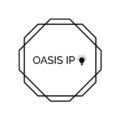Originally Posted on February 12, 2023
We all own some form of property. From the objects we use in our homes, the equipment we use at work, the appliances that make our lives easier, the device you are using to read this article right now, and so on. Whereas you own the physical object, there is an individual or firm that owns the intellectual creation behind the invention. That individual or firm is called the inventor and they are eligible to be granted a patent in that invention upon fulfillment of certain requirements. An invention refers to a product or process that offers a technical solution.
What then is a patent?
A patent is a legal document that grants an inventor exclusive right to prevent others from making, using, and selling their invention for a certain period (which in most jurisdictions is 20 years). One of the conditions for grant of a patent is disclosure. Inventors are required to disclose the details of their inventions so that other people can utilize the patent information and work the invention, and in return of such disclosure, inventors are granted exclusivity.
To obtain a patent, an inventor must file a patent application with their national patent office or intellectual property office, and an examination by a patent examiner who determines whether the invention is eligible for patent protection is conducted. Patent eligibility is based on three minimum requirements according to the TRIPS Agreement (Article 27); novelty, industrial applicability (utility), and inventiveness or non-obviousness. These considerations vary according to different jurisdictions as they are applied for different inventions.
Once a patent is granted, the inventor has the exclusive right to prevent others from making, using, or selling the invention for a certain period. This period of time varies depending on the type of patent, but it is generally 20 years from the date of filing. After the patent expires, the invention enters the public domain and can be used by anyone without permission from the inventor.
It is important to understand that a patent does not give the inventor the right to make, use, or sell their invention. It only gives them the right to prevent others from doing so. In order to actually use their invention, the inventor must still obtain any necessary licenses or permits, and they may also need to pay royalties to any other parties who hold patents on related technologies.
How to obtain a patent in Uganda?
In Uganda, patents are granted by the Uganda Registration Services Bureau (URSB), which is the government agency responsible for registering patents, trademarks, and other forms of intellectual property.
To obtain a patent in Uganda, an inventor must file a patent application with the URSB upon payment of the prescribed fees. The application must include a detailed description of the invention, as well as any drawings or diagrams that may be necessary to understand it. The application is then reviewed by a patent examiner, who will determine whether the invention is eligible for a patent and whether it is novel, non-obvious (involves an inventive step), and is industrially applicable.
Once a patent is granted, the inventor has the exclusive right to prevent others from making, using, or selling the invention for a period of twenty years. After the patent expires, the invention enters the public domain and can be used by anyone without permission from the inventor.
It is important to note that in Uganda, minor inventions can also receive protection through the utility model system. Utility models are intellectual property rights similar to patents, also granted for inventions of products or processes but they receive protection for a shorter period of time. Utility model term of protection in Uganda is 10 years. The advantage with utility models is that they are cheaper and easier to obtain and maintain and are available for less sophisticated inventions common to SMEs.
To read more about patents, visit the WIPO resources and URSB for information related to Uganda.

